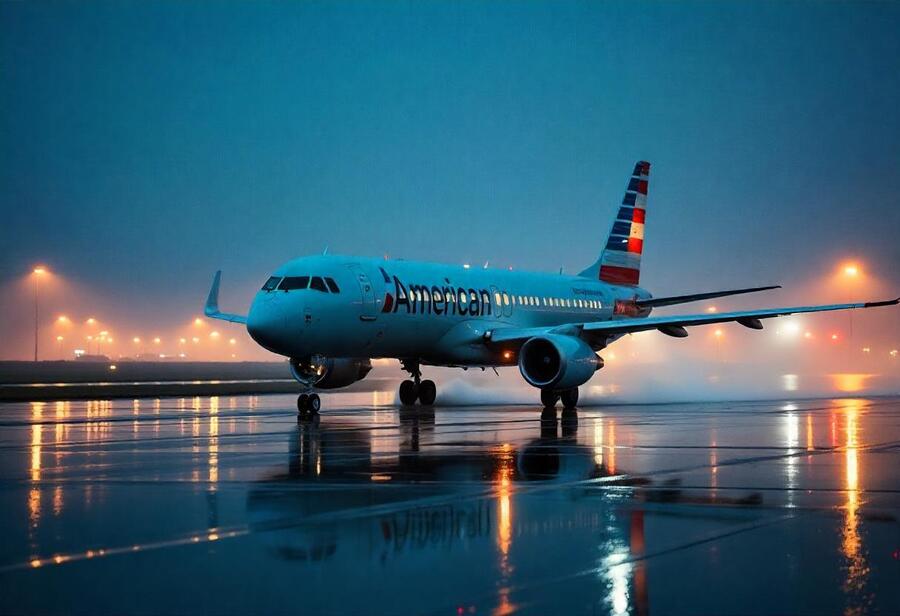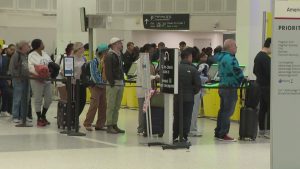Thursday, July 3, 2025
On July 1, 2025, American Airlines Flight 2254, traveling from Chicago O’Hare (ORD) to Las Vegas McCarran (LAS), encountered unexpected severe weather, leading to a diversion that left passengers stranded at a small regional airport. The Airbus A321, after facing dangerously high winds near Las Vegas, was redirected to Bullhead City Airport (IFP), approximately 100 miles away from its destination. While the diversion was necessary for the safety of the passengers and crew, it created significant delays and left travelers with few options to continue their journey.
Diversion Driven by Hazardous Weather Conditions
The severe weather that disrupted Las Vegas airport operations on July 1st caused numerous aborted landings. Strong wind gusts made it unsafe for commercial flights to land, including Flight 2254. In light of the weather forecasts and the limited ability to safely land at LAS, the crew opted for a diversion to Bullhead City, a smaller airport in Arizona. The decision was made after assessing various factors, including fuel levels, weather conditions, and available landing options.
Bullhead City, while not equipped to handle large commercial flights, offered a safe option for landing, though it lacked the infrastructure and services typically available at larger airports. As a result, passengers faced long delays and limited access to essential services, which complicated the situation.
Passengers Face Delays and Logistical Challenges
Upon arrival at Bullhead City, passengers found themselves in a challenging situation. The small airport, which is not accustomed to handling flights of this scale, struggled to accommodate the sudden influx of travelers. Without the commercial services typically available at larger airports, passengers were left with minimal options for transport or refreshment, creating frustration and uncertainty among those stranded.
American Airlines attempted to mitigate the inconvenience by organizing buses to take passengers to Las Vegas, but the lack of clear communication and the airport’s limited resources caused delays. Many passengers, eager to resume their travel, chose to book private transport, with Uber rides to Las Vegas costing between $100 and $180 per person. The high costs and lack of alternatives reflected the urgency of the situation and the limited options available at the small airport.
The logistical challenges were further exacerbated by the fact that flight crews are required to rest after a certain number of hours under FAA regulations. As a result, Flight 2254 was ultimately canceled, leaving passengers with even more uncertainty regarding when they could complete their journey.
Bullhead City: A Safe but Limited Landing Site
Despite its limitations, Bullhead City Airport (IFP) provided a safer alternative compared to other nearby airports. While it lacked the capacity to handle large numbers of passengers, its operational runway allowed the Airbus A321 to land safely under the circumstances. Airports like Prescott Regional (PRC) and St. George Municipal Airport (SGU), though closer, were ruled out due to the ongoing storm and their inability to accommodate large aircraft safely.
Bullhead City was not an ideal choice due to its size and lack of commercial infrastructure, but it was the best available option given the storm’s intensity and the risks associated with landing at Las Vegas. The decision to land there ultimately ensured the safety of everyone aboard the flight, which remained the airline’s top priority.
Passenger Adaptation and Airline Response
As the situation developed, passengers had to quickly adapt to the circumstances. With limited options for food or comfort, the atmosphere at Bullhead City Airport became tense. The airline did its best to manage the situation by offloading luggage and arranging buses to Las Vegas, but the lack of available staff and facilities at the airport made these efforts less efficient than they might have been at a larger airport.
The absence of timely updates further compounded the frustration felt by passengers, many of whom were eager to continue their travels. Some opted for private transport, seeking faster solutions despite the high costs. Although the airline did not have direct control over the available facilities, its response highlighted the difficulties of managing large-scale diversions at small regional airports.
Weather-Related Disruptions in Aviation: A Growing Concern
The disruption caused by severe weather is not an isolated incident. Severe weather events have led to numerous flight diversions, delays, and cancellations across the globe. In this case, the high winds at Las Vegas created a challenging situation for aviation operations, forcing American Airlines to make a diversion to Bullhead City. This scenario underscores the importance of contingency planning, both for airlines and passengers, as weather conditions can be unpredictable and disruptive.
Weather-related diversions, while often necessary for safety, create significant challenges in terms of logistics, communication, and overall passenger experience. The decision to divert to a smaller airport is sometimes the safest choice, but it highlights the need for better infrastructure at regional airports to handle unexpected diversions more efficiently.
The Role of Smaller Airports in Aviation Disruptions
This event also highlights the role that smaller airports can play in emergency diversions. While airports like Bullhead City may not have the resources or infrastructure of larger hubs, they serve as critical landing sites when weather conditions or other factors make it unsafe for flights to land at their intended destinations. As weather patterns continue to impact air travel, the aviation industry will need to consider how to improve the readiness of smaller airports to handle such situations more effectively.
The situation faced by American Airlines Flight 2254 emphasizes the unpredictable nature of air travel during adverse weather conditions. Although diversions to smaller airports can be vital for safety, they often come with their own set of challenges that impact passengers. Going forward, both airlines and passengers will need to adapt to the complexities of weather-related disruptions and work together to find solutions that minimize the inconvenience and discomfort caused by these events.
Advertisement
Advertisement
«Enjoyed this post? Never miss out on future posts by following us»
Tags: Airline News, American Airlines, Bullhead City, delays, Las Vegas, severe weather, Travel News, US
I want to receive travel news and trade event update from Travel And Tour World. I have read Travel And Tour World’sPrivacy Notice.
Thursday, July 3, 2025
Thursday, July 3, 2025
Thursday, July 3, 2025
Thursday, July 3, 2025
Thursday, July 3, 2025
Wednesday, July 2, 2025
Thursday, July 3, 2025
Thursday, July 3, 2025




